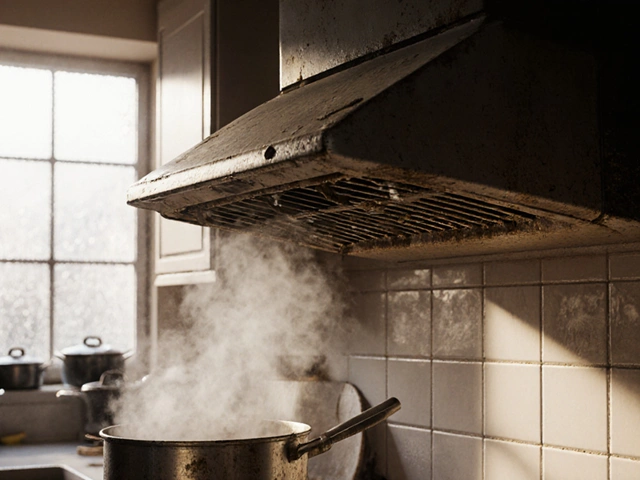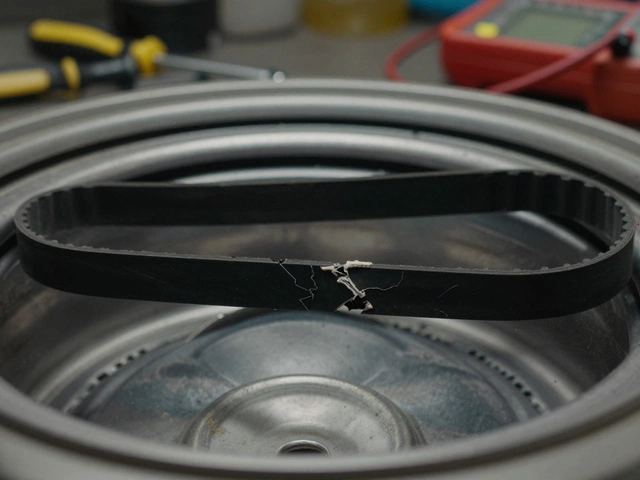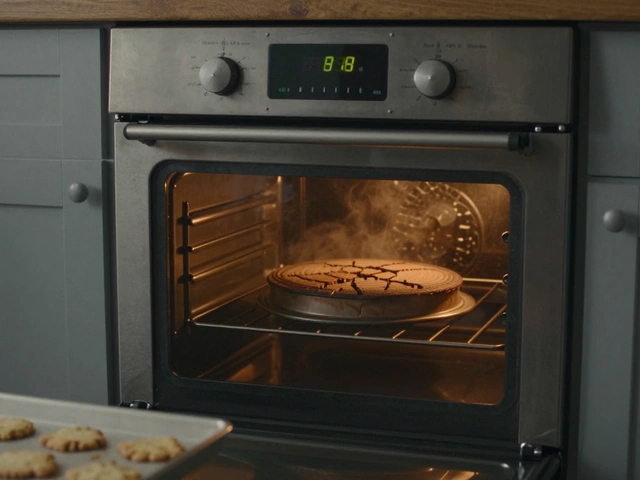Ever stood in a steamy kitchen or a stuffy bathroom, wondering how long you’ll be stuck with a broken extractor fan? Believe it or not, most basic fixes don’t take nearly as long as you might think. If the fan just needs a thorough clean or a simple part replacement—like swapping out a busted switch or a worn-out filter—you could be in and out in under 30 minutes.
Of course, not every problem is that straightforward. Some issues demand more time, especially if you’re dealing with awkward wiring, hard-to-reach fans tucked above cabinets, or old models where finding parts feels like a treasure hunt. Don’t panic, though. You don’t have to be a pro to tackle the basics, and a lot of folks cut repair time in half by following the right steps in the right order.
- What Affects Repair Time?
- Quick and Common Fixes
- When Repairs Get Complicated
- Getting It Done Faster: Tips
What Affects Repair Time?
Not all extractor fan repairs are created equal. The time it takes to fix things depends on a handful of real-world factors, and skipping the guesswork can save you a boatload of hassle. Let’s break down what really impacts how fast you’ll get that fan humming again.
The main stuff that messes with repair times:
- Type of problem: If your fan only needs cleaning or a quick switch change, you’re looking at 15-30 minutes. But electrical faults or dead motors make things a lot slower.
- Age and model: Older or unusual models take longer because spare parts might be hard to find. Some companies stopped making key components more than 10 years ago.
- Access: Easy-to-reach fans (like on a clear kitchen wall) get sorted faster than ones stuffed into weird bathroom ceilings or above duct clusters.
- Tools and experience: If you have a voltage tester, screwdriver set, and know basic wiring, you’re already ahead. If not, add at least 45 minutes for Googling and finding tools.
A 2024 survey from Fixer Pro, a UK appliance repair service, showed that 62% of standard fan repairs took under 30 minutes, but complex jobs (like rewiring or replacing motors) stretched to 90 minutes or more. Here’s a quick look at the stats:
| Repair Type | Average Time |
|---|---|
| Clean & Quick Part Swap | 15–30 minutes |
| Wiring/Electrical Issue | 45–90 minutes |
| Motor Replacement | 60–120 minutes |
Think you’ll breeze through a job just because it looks simple? Sometimes a quick fix turns into a headache if screws are rusted or you need to climb up a ladder. According to Mike Blair, certified electrician and trainer at HomeMenders, “Even swapping out a basic bathroom fan can take an hour if the old wiring is dodgy, or if the ceiling is crumbly. Always check behind the cover before you decide it’s a five-minute repair.”
So bottom line: keep your expectations realistic and remember, the more info you have about your specific fan and setup, the less time you’ll waste hunting for the right fix—or the right part.
Quick and Common Fixes
If your extractor fan is making weird noises, not switching on, or just blowing air around instead of taking smoke or steam out, chances are you’ve got one of the classic problems. These issues usually don’t take long to fix. For starters, clogged filters or greasy blades can gum up even a new fan. Pull off the cover, clean the blades and filter with warm soapy water, let them dry, and put everything back. This simple clean is sometimes all it needs, and the whole job rarely eats up more than 20 minutes.
Another common headache is a dead switch or a blown fuse. Before you start unscrewing the fan, flip the switches, reset any tripped breakers, and check if the main power is working. Replacing a standard wall switch or a fuse is often a five-minute job if you’ve got a basic screwdriver and a replacement part on hand. It’s the same deal with noisy fans—a little lubrication on the fan’s moving parts can hush that rattle fast.
- Extractor fan repair becomes trickier if the problem is wiring, but swapping a switch or cleaning out dust almost always solves things quickly.
- Loose mounts or rumbling fans often need one thing: tightening the screws that hold the fan body to the wall or ceiling. Grab a screwdriver and check each one. That alone can cut down noise and stop wobbles.
- Don’t forget to unplug or switch off the fan at the mains before doing anything. Safety is faster than an emergency room visit.
The surprise for most people? You can fix over half of extractor fan breakdowns with just a clean or a quick part swap. So before calling anyone, try these basics. Your fan—and your wallet—will thank you.

When Repairs Get Complicated
Some extractor fan repair jobs go way past a quick fix, especially when electrical issues or serious blockages show up. If you switch on the fan and nothing happens at all, the trouble might sit with the wiring, a dead motor, or even a scorched circuit board. In those cases, grabbing a screwdriver isn’t enough—you’re looking at diagnosing power, checking fuses, and possibly stripping the unit apart.
Older fans throw more curveballs. Parts can be discontinued, screws are rusted tight, and access is a pain. This can push the repair time from under an hour to a whole afternoon or longer. Sometimes, just tracing wires through a wall or ceiling feels like you need X-ray vision.
Another big time-drainer? Fans installed in tight, hard-to-reach spots. Think about a fan boxed in above a shower, or boxed in behind kitchen cupboards—you’ll need extra tools and more patience. Plus, if you discover mold or years of greasy buildup in the duct, you’ll have to clean that out too, because blockages are a top cause of poor airflow.
- Electrical troubleshooting: Testing the switch, motor, and circuit.
- Deep cleaning: Removing thick grease or dust build-up from blades and ducts.
- Replacing old wiring: Needs safety checks and experience.
- Tracking down rare parts: Waiting for delivery can stretch a repair over days.
If you’re wondering how often things get tricky, professional repair techs say about 25% of home extractor fan jobs run into complex problems that kill your afternoon.
| Repair Difficulty | Average Time |
|---|---|
| Basic Cleaning/Replacement | 15-30 mins |
| Electrical Wiring Issue | 1-3 hours |
| Hard-to-Reach Installation | 2-4 hours |
| Waiting for Special Parts | Up to several days |
One tip—never skip checking for a warranty before attempting serious repairs. Some manufacturers will send out replacement parts or even handle major faults if you’re still covered.
Getting It Done Faster: Tips
If you’re itching to get your extractor fan repair finished without wasting your whole day, there are a handful of proven ways to speed things up—no shortcuts, just smart planning. Before you even grab a screwdriver, make sure you know the fan’s make, model, and how it mounts. Most wasted time comes from digging around for tools or missing parts halfway through.
- Turn off the power first. Always. This sounds obvious, but people get zapped every year messing with live wires. Head to the fuse box and shut off the right circuit.
- Gather all your tools ahead of time. You’ll usually need screwdrivers, a voltage tester, and maybe some wire strippers. Having everything on hand saves endless trips to the toolbox.
- Watch a quick video for your specific fan. There’s no shame in checking YouTube for the exact steps—lots of experienced techs share detailed walks through most brands and models.
- Lay out every part you’ll need. Filters, fuses, a new switch, or mounting brackets—try to have them all sitting next to you before you start. Replacement parts for older fans can take a couple of days to arrive if ordered online, so double-check before you start tearing things apart.
- Avoid skipping the clean-up. Dust and crud are the main reason fans slow down or stop. Cleaning the cover, blades, and vents can sometimes fix a staffy fan without any parts swapping at all.
Check out this table below—it's a handy cheat sheet for average repair times based on typical faults:
| Issue | Average Time to Fix | Skill Level Needed |
|---|---|---|
| Dirty or Blocked Fan | 15-20 minutes | Beginner |
| Replacing Switch or Fuse | 20-30 minutes | Beginner |
| New Motor Installation | 1-2 hours | Intermediate |
| Faulty Wiring | 40-60 minutes | Intermediate |
| Full Fan Replacement | 1-2 hours | Intermediate/Pro |
If you find yourself wrestling with a job that’s going way over these typical times, don’t be shy about getting a second opinion—sometimes, pros finish a stubborn repair twice as fast just because they’ve seen it all before. Also, fans in rented properties are often fixed slower because of property management red tape; if you rent, check what you’re responsible for so you don’t waste time chasing repairs that aren’t yours to handle.









